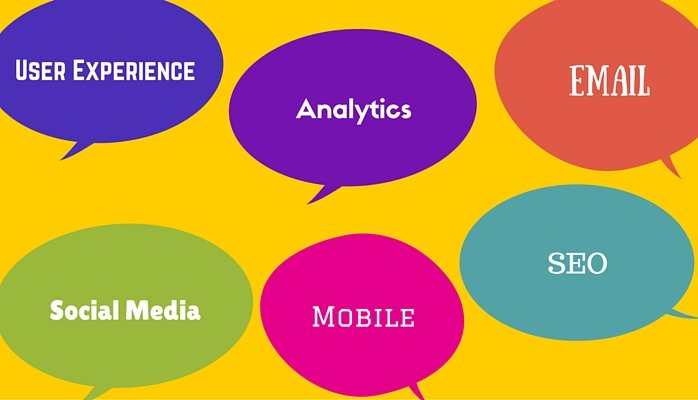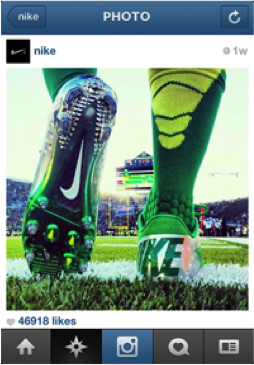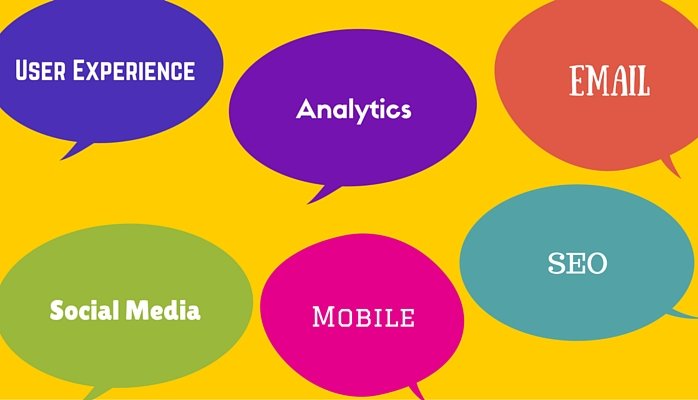By Dan Winkler, UMSL MBA Student
Mobile Marketing Strategies, a special Marketing seminar course offered by the UMSL Business School, touches on many topics currently impacting our everyday lives in the world of mobile marketing. While I attended this class, SME’s and guest speakers came together to present on these “hot-button” mobile topics which included user experience (UX) design, mobile advertisements (and ad blocking), mobile product lifecycle management, mobile app design and notifications, and mobile wallets.
That last topic, mobile wallets, is one that I, like many, have had at least moderate experience with, which is why I want to delve a bit deeper into it in this blog post.
e-Commerce is undoubtedly revolutionizing and defining the way in which the free market works. Bringing to life the ability to shop without ever setting foot inside a retail store was a dream of many [guys] thankfully brought to fruition.
Even today many of us might feel that e-Commerce has come full-circle in its lifestyle, while others might think it’s only in its infancy still. Regardless, while still feared by some, e-Commerce is starting to grow into a primary avenue of shopping.
PayPal, Apply Pay, Samsung Pay, Android Pay, Google Wallet, Square Cash, Venmo, Snapchat, Facebook – these brands are all some of the most widely used versions of mobile wallets. The convenience of having your bank account directly (and securely) linked to your smartphone is yet another win for technology; however this particular feature is only slowly progressing into the Early Adopter stage of the Diffusion of Innovations model. Why? What will push it into the critical Early Majority stage of success?

Acceptance.
Both merchants and consumers are hesitant to accept mobile payments due to the fact that it hasn’t gained much attention or popularity in the world of commerce. Everybody seems to be waiting for someone else to test the waters before they adopt the new[er] technology. Especially in the wake of such alarming rates of merchant fraud. You can’t go from one holiday to the next without hearing about another major company whose systems have been hacked and personal information stolen.
Security concerns top the list of reasons why consumers shy away from proximity mobile wallets. Some 55 percent of respondents were concerned about some kind of security issue such as a hack or losing their phone. Some 21 percent of respondents don’t know enough about mobile wallets to make a decision about them. (Hernandez)
What many people don’t know is that mobile payments themselves are actually safer than your traditional credit card transaction. With the growing popularity of mobile transactions, backed security statistics, it’s only a matter of time before mobile wallets become widely accepted – we just have to better understand them.
One way to gain more knowledge around mobile wallets, as well as mobile marketing in general, is by taking the Special Marketing Seminar business course through UMSL!
Reference:
Hernandez, Will. No surprise: Gallup finds mobile wallets low priority for consumers. 21 July 2015. 26 October 2015 <http://www.mobilepaymentstoday.com/blogs/no-surprise-gallup-finds-mobile-wallets-low-priority-for-consumers/>.
How I managed to embrace the shift to digital marketing
 By: Sarah Dalton, UMSL Digital Mindshare Editor-in-Chief and UMSL MBA Student
By: Sarah Dalton, UMSL Digital Mindshare Editor-in-Chief and UMSL MBA Student
As a 2009 graduate with a degree in Business Administration, a concentration in Marketing and a minor in Communications, I really thought I was ready to take on the marketing world. Or, maybe I had just drank too much of the liberal arts kool-aid (#GoBulldogs).
The first few years of my career were great. I started as a Marketing Analyst, learning the ins-and-outs of the client experience, calculating MANY a cost-per-sale analyses and making recommendations as to which campaigns needed to be accelerated and which needed to be trashed.
As I progressed into marketing generalist roles, all things digital quickly became part of my daily responsibilities. I was creating banners, landing pages and social assets on the fly. Even though YouTube and blogs proved to be fantastic resources for learning more about my new responsibilities, I felt like I had a GAPING hole in my skill set and education in regards to all things digital marketing. Yes, I could brief a designer on how to create an appealing banner, write a clever social post or develop drip email campaigns… but what did this all mean? How did this all work together, and what the heck were we really spending our resources on?
I realized that even graduating in 2009 (wow – less than 7 years ago) was still TOO EARLY to have any formal education on digital strategy. I knew all about consumer behavior, retail marketing and integrated campaigns, but there wasn’t a single digital course or project to speak to from my undergraduate transcript. And not at the fault of my alma mater – this digital takeover just happened so fast.

After a lot of research and networking with the best minds in St. Louis digital, I discovered that Digital Marketing Certificates from universities are starting to be “a thing.” They usually landed in the Professional Studies or Schools of Continuing Education in my research experience. In true Sarah fashion, I jumped right in and decided since I was starting a Digital Certificate, I might as well just complete a full-on MBA in the process since many of the classes could be credit toward an MBA anyway.
This education has completely changed both my skill set and overall confidence in digital tactics. There are still things I don’t know that come up, but I now feel like I have the right base level understanding to attack these issues head-on. Here’s a sample of the coursework I recently completed to acquire my certificate:
-Digital Media Marketing Strategy & Measurement
-Clinical Study in Digital and Social Media Marketing (this was like a mini-internship to help non-profits with their digital strategies)
-Social Media Strategies
-Mobile Marketing
-Blogs to Buzz
-Digital Media Buying
Going back to school or fitting in classes on the weekends is definitely not the answer for everyone. It’s about timing. Here are additional non-school resources I have used to round out this new knowledge:
1. Digital Marketing Conferences | Here’s a sample of ones I attend in St. Louis and one I attended in New York this year. Google what’s happening in your city.
Social Recruiting Summit
Digital Marketing Conference
2. HubSpot.com Blogs | One of my best and most visited friends. Search for anything social or digital, and you’ll find very tactical descriptions and tips.
3. Lynda.com | Did you Lynda.com is now a LinkedIn company? Great (and cost effective) resource to pick up more “formalized” training.
4. Hootsuite University | I cannot say enough about how much Hootsuite makes the lives of social media managers easier. As an added bonus, they now offer an entire suite of classes that teach you not only how to best use their platform, but also how to effectively build, target and deploy social campaigns.
5. Networking | Meet with the best digital talent that will reply to your emails. Is there a local Social Media or Digital Marketing Club? I know St. Louis has several. Admit you’re clueless and talk to the experts about how they “figured it all out” in the city you are in. And, these are awesome connections for later when you “get it.”
Digital and social are not only here, they are speeding away. It’s part of our jobs as effective marketers to keep up.
How do you stay ahead?
Instagram: Then and Now
 #Throwback:
#Throwback:
On October 6, 2010, co-founders Kevin Systrom and Mike Krieger released a free mobile app to the world known as, Instagram. The two developed the simple application in San Francisco, California; naming the app after the combination of words “Instant Picture” and “Telegram.” Quickly gaining traction, the app gathered enough attention to accrue one-million users by December 2010, and ten-million users by September 2011. During the same year Instagram was awarded, “iPhone App of the Year.”
For nearly two years since its inception, Instagram remained an application available exclusively to the iPhone. In April 2012, Instagram made a huge move allowing people who owned Android phones to now download one of the most popular mobile applications in the world. With this flood of new users and surge in popularity, Facebook decided to seize the moment and purchase Instagram for one-billion dollars: $300 million of it was in cash, and the rest was invested in Facebook’s stock.
After Facebook’s hefty investment, Instagram continued to explode in popularity. By integrating new features into their still-photo dominant system – the application kept evolving through the introduction of Instagram Videos, as well as the ability to now view Instagram media from the web. These simple yet groundbreaking additions to the app pushed the company to have 150 million users by the year 2013 – to now having doubled that with 300 million active users as of August 2015.
As the saying goes, “a picture is worth a thousand words.” For some, a simple post of a picture is all the person needs to convey the exact message they are trying to send to their followers. With other forms of popular social media such as Twitter and Facebook; Instagram separates themselves from the pack by focusing their attention on making photos the main form of communication among their users. Through the use of filters and simple yet very clever photo editing tools accessible right from the application; the user can make their picture look as if a professional photographer took it and edited it.
#InstagramFamous:
Many celebrities, as well as companies – make full use of Instagram’s large following by advertising their products and themselves to reach the masses much more effectively. Celebrities who have large followings on Instagram include, Taylor Swift (the most with 48 million followers), all of the Kardashians (Kim has 47 million – Khloe has 32 million), soccer stars Neymar and Christiano Ronaldo with 32 million and 31 million respectively, as well as many more who have well over 10-20 million followers a piece.
These staggering numbers obviously mean that these people have a lot of social influence when it comes to their followers. Companies of course then look to these people to help promote their company or brand whenever their celebrity has the opportunity to take a quick selfie and write a caption about it.
#Marketing:
One celebrity who does a very good job at promoting himself as well as other ventures is, Dwayne ‘The Rock’ Johnson. Becoming most popular in his early days as a professional wrestler in the WWE, ‘The Rock has since gained even more popularity by staring in many action films such as, “The Fast and Furious” franchise; as well as “San Andreas”, and “Hercules.” With 28 million followers on Instagram, ‘The Rock’ has one of the largest influences when it comes to the app. Sharing pictures of his everyday life, as well as hilarious videos of him on set or working out – ‘The Rock’ makes sure to make his presence known in the Instagram community, and many companies take note. He recently announced that he partnered up with Ford motor company as their official Spokesman of Service. This announcement of course came through the use of Instagram by using a picture of him standing, arms crossed, with the Ford logo floating beside him. Simple posts like these influence the minds of thousands of followers who happen to take a glance as they scroll through their ‘feed.’
Companies not only make sure to post through the use of their sponsored celebrities, but also make sure to post pictures on their own Instagram accounts. Many major companies that make products for consumers now-a-days have their own official accounts, keeping their potential buyers up to date with the latest clothing, gadgets, and services that they are willing to exchange.
Companies such as Nike and Victoria’s Secret (23 million and 22 million followers respectively) make sure to constantly flood their followers’ feed with new and upcoming products that can be purchased on their website; if not the store. Accounts such as BodyBuilding.com announce product deals that can be viewed first from Instagram.
It is through these simple pictures and captions that celebrities and organizations alike hold a very large influence on society. By tracking how many likes a picture gets and understanding who the target audience is, companies can position themselves to appeal more to followers who will in turn, hopefully, become customers.
Instagram by the Numbers

Here are 5 quick Instagram facts according to ICONOSQUARE’s Instagram 2015 Study:
Fact #1 – 61% of Instagramers like at least 1 media/day and more than 30% like over 10 media/day
Fact #2 – 64% of Instagramers are women, 36% men. 73% of Instagramers are between 15 and 35 years old
Fact #3 – 70% of Instagramers have already looked for a brand on Instagram. 41% follow or would follow a brand to benefit from special offers
Fact #4 – 48% of Instagramers are professionals. 46% of Instagramers have higher education degrees
Fact #5 – Top 3 reasons why users follow brands on Instagram: 62% because they love the brand, 54% to discover new things, 48% because they find content interesting or funny.
What is your favorite brand to follow on Instagram?



